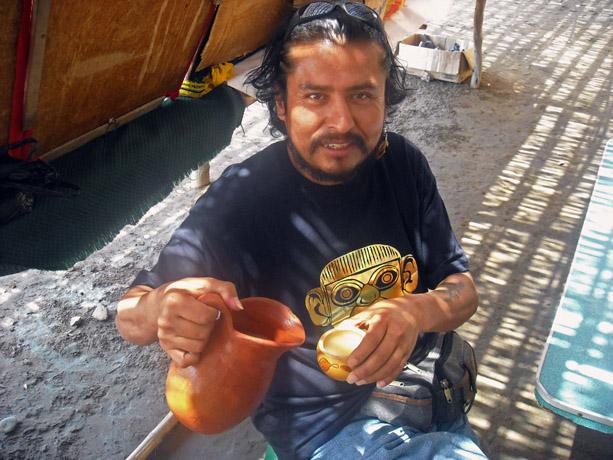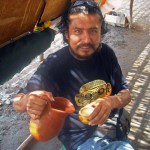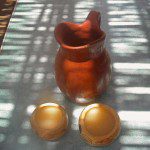Cocktail of the WeekDecember 12, 2012
By • December 13, 2012 0 1344

During this festive season, Washington revelers will gather at holiday soirees and indulge in glasses of punch, eggnog and seasonal cocktails. The year 2013 will be rung in with Champagne toasts. But in Peru and other parts of South America, special occasions have been marked by drinking chicha, a tradition that dates back more than 1,000 years.
Chicha is a fermented alcoholic beverage made from corn that originated with the Incas, who used it during rituals and festivals. Mills in which chicha was made were found at Machu Picchu. Archaeologists from the United States uncovered an ancient chicha brewery in the mountains of southern Peru believed to be more than 1,000 years old. When I visited the ruins of the pyramid tombs of Sipan in late November, the unearthed buriel sites included, along with human remains, gold and semi precious adornments and idols, and ceramic pitchers used for chicha.
While chicha de jora, the traditional indigenous drink is forged from corn, across the Latin America chicha is made from many different grains and fruits including quinoa, apples, cassava and grapes. Another popular beverage in Peru is chicha morada, a deep purple non-alcoholic drink made from purple corn, lemon and spices.
Chicha de jora is prepared from a specific kind of yellow corn called jora. It has a pale yellow hue, a somewhat opaque milky appearance, and a somewhat acerbic and sour taste that some find similar to an unfiltered beer or a strong hard apple cider. While the flavor is a somewhat acquired taste, I found it to be quite refreshing when enjoyed outdoors under the powerful Andean sun.
Chicha is prepared by germinating corn, extracting the malt sugars, boiling the worth, and fermenting it in large vessels, traditionally huge earthenware vats for several days. The process is similar to production of beer.
Traditionally, Inca women made chicha by chewing corn to a pulp and then spitting the mixture into a vat of warm water. Once the corn was masticated and spit into the warm water, it would sit for a few days before it was ready to drink.
Today chicha is not commerically produced, it is generally an unregulated and unlicensed business similar to moonshine. Many people make it in their homes or restaurants and it is often sold straight from the ceramic containers where it was brewed.
I was first introduced to Chicha, by my Shaman, Illapa Naveda. He purchased it from a small bodega, it came in a large unmarked recylced glass bottle sealed with a cork. He touted it to me as a healthier choice than other alcohol such as commerically produced beer or rum, since it is homemade from natural ingredients. There may some truth to his statement, at only about 2- to 3-percent alcohol, chicha is a better alternative than higher-proof potables.
Before drinking the chicha, he dripped a portion of on the ground while saying the word ?Pachamama? which is Quechua (Incan language) for ?mother earth.? This ritual is an indigenous tradition. He explained to me that the earth is hungry and the chicha was a ceremonial offering for the earth.
Today Chicha remains an important part of Peru?s history, and is often used to mark special occasiocns and celebrations such as weddings, baptisms or holidays. It is a communal drink and generally served in a small, hollowed-out gourd, called a pilche, and passed from person to person.
So this year, going with my ?When in Rome? mantra, my holiday plans include, celebrating the Navidad season with my new friends and enjoying this unique and historical tipple.
- Shaman Illapa Naveda enjoys a glass of chicha near the Sipan ruins in Chiclayo, Peru. | Jody Kurash



